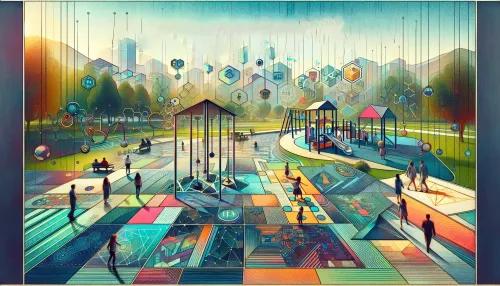
The Evolution of Sensory-Friendly Design: Pioneering Innovations and Their Lasting Impact on Autistic Children

In recent years, increasing attention has been directed towards the development of sensory-friendly design to cater to the unique needs of autistic children. From the historical evolution of these spaces to their contemporary impact, the journey of sensory-friendly design has become a significant aspect of supporting and empowering autistic children across various environments.
Tracing the Historical Development of Sensory-Friendly Spaces
The concept of sensory-friendly spaces traces its roots back to the late 20th century when pioneering minds recognized the need for inclusive environments catering to individuals with sensory sensitivities. These spaces were initially introduced in educational settings, aiming to provide secluded areas equipped with soothing sensory stimuli to accommodate autistic students during overwhelming situations. Over time, this foundational idea expanded beyond academic institutions, finding applications in various public facilities, including museums, libraries, and recreational centers, thus pioneering the development of sensory-friendly architecture and design.
Empowerment Through Inclusive Environments: Redefining Accessibility for Autistic Children
The evolution of sensory-friendly design has significantly redefined accessibility for autistic children, paving the way for inclusive environments that promote their cognitive and emotional well-being. Incorporating elements such as adjustable lighting, noise-reducing materials, and calming color schemes, these spaces aim to minimize sensory overload and create a conducive atmosphere for learning, social interaction, and overall comfort. By providing a sense of safety and predictability, such environments empower autistic children to engage more confidently in various experiences, fostering their independence and self-expression.
Nurturing Well-Being: How Sensory-Friendly Technology Revolutionized Support for Autistic Children
The advent of sensory-friendly technology has revolutionized the support available to autistic children by leveraging innovative solutions tailored to their specific needs. From interactive sensory apps to assistive communication devices, technological advancements have played a pivotal role in enhancing accessibility and promoting skill development among autistic individuals. These technologies not only facilitate personalized learning experiences but also serve as valuable tools for therapists and caregivers, enabling them to effectively connect with and support autistic children in their developmental journey.
Holistic Perspectives: Sensory-Friendly Design as a Catalyst for Emotional Well-Being in Autistic Children
Sensory-friendly design extends beyond physical spaces and technology, serving as a catalyst for enhancing the emotional well-being of autistic children. By prioritizing comfort, safety, and sensory regulation, these designs foster a sense of security and emotional stability essential for the mental health of autistic individuals. The deliberate integration of calming sensory elements within living spaces, educational environments, and recreational facilities amplifies feelings of acceptance and belonging, ultimately contributing to the holistic development and emotional resilience of autistic children.
Amplifying Inclusion: Collaborative Efforts in Integrating Sensory-Friendly Concepts in Global Architectural Designs
The impact of sensory-friendly design has transcended geographical boundaries through collaborative efforts aimed at integrating its concepts into global architectural designs. Architects, designers, and advocates have actively collaborated to incorporate principles of universal design within diverse cultural and geographical contexts. This inclusive approach not only promotes awareness and understanding but also fosters a more inclusive built environment that accommodates the needs of individuals with autism worldwide.
Bridging the Gap: Sensory-Friendly Initiatives Fostering Understanding and Acceptance in Communities
Sensory-friendly initiatives have played a pivotal role in fostering understanding and acceptance within communities by raising awareness about the unique requirements of autistic individuals. Through educational campaigns, interactive workshops, and community engagement projects, these initiatives have bridged the gap between neurodiverse populations and mainstream society. By promoting empathy, compassion, and inclusivity, these initiatives have contributed to creating supportive communities that embrace the strengths and potential of autistic children.
In closing, as sensory-friendly design continues to evolve and influence various aspects of our built environment, its lasting impact on autistic children is evident. From historical developments to contemporary innovations, the collective effort to create inclusive spaces tailored to the needs of autistic individuals reflects a profound commitment to empowerment and acceptance. Embracing this evolution not only signifies progress but also underscores the importance of holistic support systems that enrich the lives of autistic children within diverse societal contexts.


